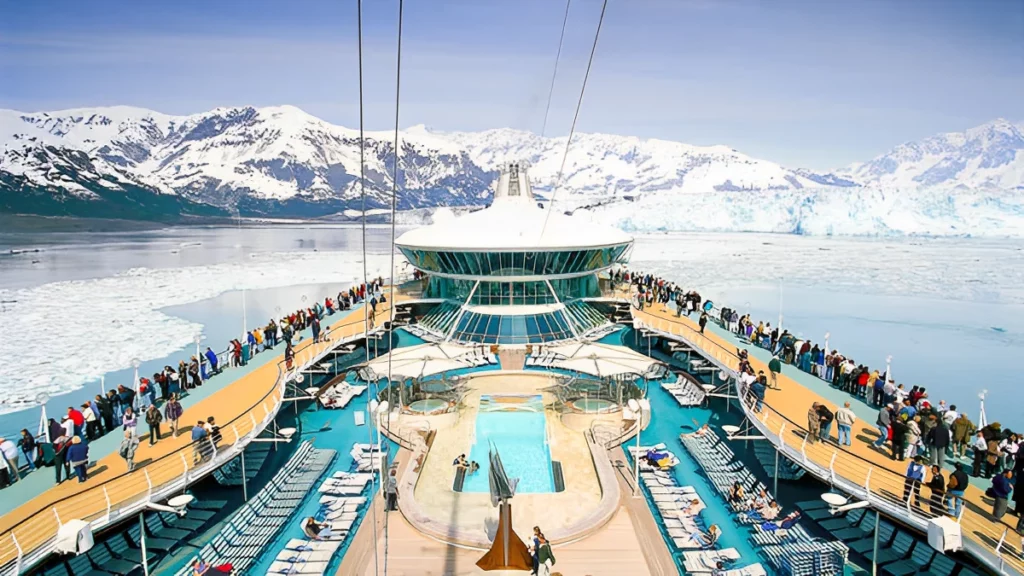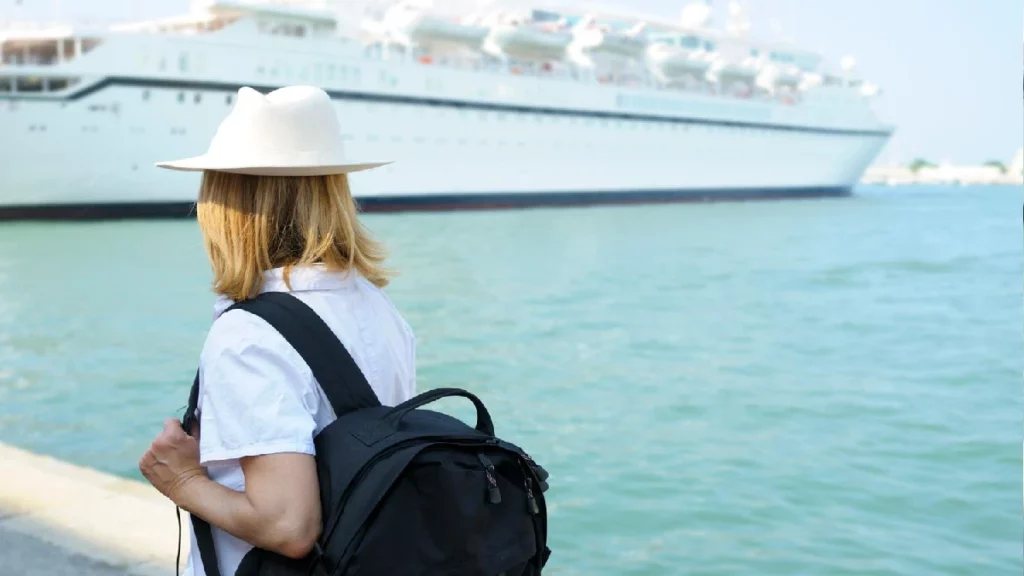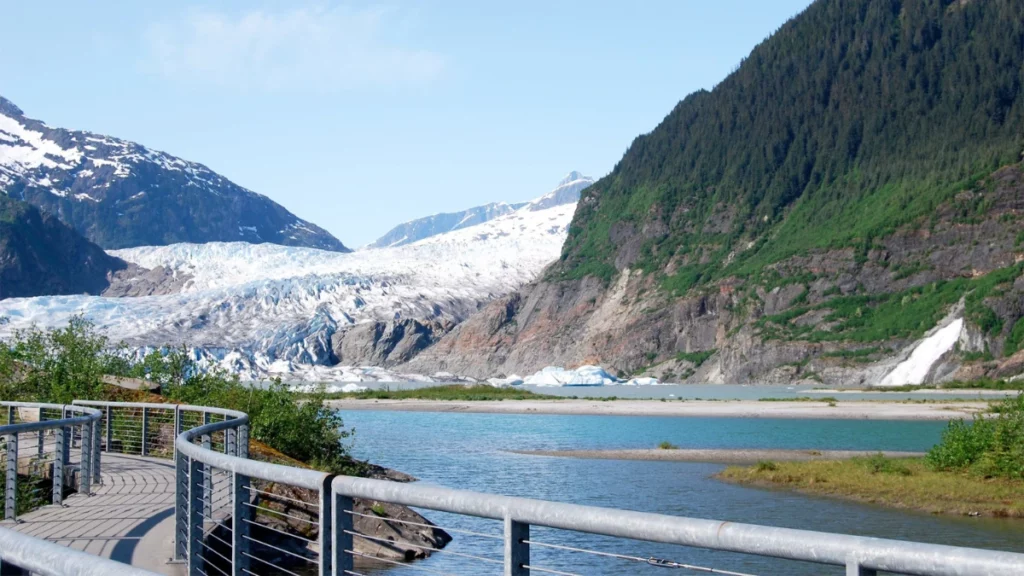Alaska, with its wild landscapes, towering glaciers, and incredible wildlife, is one of the most sought-after cruise destinations in the U.S.
Over 1.4 million tourists are drawn to its rugged beauty every year, with more than half choosing to explore it from the comfort of a cruise ship.
From the breathtaking views of Mendenhall Glacier to the expansive Columbia Glacier, Alaska’s icy wonders are best experienced from the deck of a ship.
Whether you’re seeking adventure, relaxation, or a combination of both, an Alaska cruise offers an unforgettable journey into one of the world’s most stunning and remote corners. Everything you need to know about Alaska cruises

Best time for Alaska cruise

The Alaska cruise season is short, lasting only about six months, leading to crowded conditions as travelers rush to explore its glaciers, wildlife, and outdoor adventures. Alaska’s unpredictable weather influences when to cruise, even affecting ticket prices. The best time to cruise to Alaska depends on your priorities—whether you’re seeking wildlife encounters, milder temperatures, or the best deals. Careful planning is key to ensuring you experience Alaska’s natural wonders at their finest.
What to pack for Alaska?

Packing for an Alaska cruise requires careful planning, unlike other vacations where you can simply toss a few items into a bag. Given the limited space in cruise cabins and baggage weight restrictions, thoughtful preparation is essential. What you bring can make or break your trip, so it’s important to pack wisely. Proper planning ensures you have everything you need for the unique weather and activities, making your cruise both comfortable and enjoyable.
Alaska shore excursions

Shore excursions are a highlight of any Alaska cruise, offering guided tours and activities when the ship docks. Cruises, ranging from 1 to 15 days, include stops for hiking, whale watching, or shopping in Alaskan towns. These excursions provide a unique taste of local culture and stunning scenery, enhancing your cruise experience. With so many incredible options, choosing the best excursion can be a challenge, as each offers its own special experience.
Select your favorite Alaska cruise experience

Popular cruises to Alaska
Alaska is a stunning destination to explore by cruise, with various options to suit different preferences. Some cruises focus on scenic routes, stopping at popular spots like Juneau and Ketchikan, while others offer adventure-packed itineraries with glacier hikes and whale watching. Each cruise features unique ports, onboard amenities, and breathtaking views of glaciers, wildlife, and landscapes. With so many choices, selecting the right cruise for your interests is essential.
Ports in Alaska
Juneau
Ketchikan
Sitka
Skagway
Icy Strait Point
Frequently Asked Questions
How much does an average 7-day Alaska cruise cost?
The average cost of a 7-day cruise to Alaska’s Inside Passage ranges between US$3,000 and US$5,000 per person. This includes shore excursions and additional amenities, offering a complete experience of Alaska’s breathtaking landscapes and wildlife. The cost for a similar 7-day cruise along the Gulf of Alaska has the same price range. Do keep in mind prices vary depending on the cruise line, cabin type, and the season, among other factors.
Is it necessary to have a passport to go on an Alaskan cruise?
If you’re a U.S. citizen and your Alaska cruise begins and ends at the same U.S. port (Seattle, San Francisco, or Los Angeles), you do not need a passport for your trip to Alaska as per the existing guidelines. However, there are specific situations where a U.S. passport is necessary, especially if your cruise stops in Canada or other foreign ports. A valid passport is mandatory for non-U.S. citizens on an Alaska cruise. Depending on your nationality, you may also need a U.S. visa or an ESTA (Electronic System for Travel Authorization) if your cruise departs from a U.S. port.
What should I know before going on an Alaska cruise?
It’s essential to familiarize yourself with the cruise itinerary, the types of excursions offered, and the unique wildlife and landscapes you’ll encounter. Pack appropriately for varying weather conditions, and check if your cruise requires any specific documentation.
How long is the average Alaskan cruise?
Most Alaska cruises last 7 days. They are either Alaska Inside Passage cruises, which sail roundtrip from Seattle or Vancouver, or Alaska glacier cruises, which sail south from Anchorage or North from Vancouver.
When is the best time to go on an Alaska cruise?
The best time to go on an Alaska cruise is between May and September, with July being the pick of the lot. If you want to see the Northern Lights, take a cruise in September.
How much should I budget for an Alaskan cruise?
The cost of an Alaskan cruise ranges from $200 to $5,000 per person, depending on the type of cruise and the chosen accommodation. For instance, a brief 3 to 4-night cruise can cost as low as $200-$300 per person for an inside cabin, whereas a seven-day cruise can cost anywhere between $1500-$5,000 per person, depending on the cruise line, destination, and cabin type. The above expenses apart, it is best to allocate an extra $1,000 to $1,500 per person for shore excursions to fully immerse in the Alaskan experience.
What should I pack for an Alaska cruise?
Pack a mix of warm and waterproof clothing, and bring layers, such as thermal shirts, fleece jackets, and waterproof outerwear. Don’t forget a good pair of binoculars for wildlife spotting, comfortable walking shoes for shore excursions, and sunscreen for sunny days at sea.
What are the most popular types of cruises to Alaska?
The most popular types of Alaska cruises include expedition and adventure cruises, Inside Passage cruises, Northern Lights cruises, Glacial Bay cruises, family-friendly cruises, luxury cruises, and Kenai Fjords National Park cruises.
What types of shore excursions can I pursue during an Alaska cruise?
You can take a helicopter ride to a glacier, go dog sledding, enjoy wildlife tours to see bears, whales, and eagles, or try your hand at fishing. For the more relaxed traveler, city tours of Juneau, Ketchikan, or Skagway offer rich cultural experiences.
What are the best ports to dock at during an Alaska cruise?
The best ports on an Alaska cruise include Juneau, known for its stunning Mendenhall Glacier; Ketchikan, famous for its totem poles and the Misty Fjords; and Skagway, which offers a glimpse into the Gold Rush era.
What different types of cruise lines ply on the Alaska cruise route?
Cruise lines on this route range from large ships (Royal Caribbean, Norwegian, etc.) to smaller expedition-style cruises (UnCruise Adventures, Lindblad Expeditions, etc.).
What amenities are provided during an Alaskan cruise?
Amenities include everything from luxurious spas, fine dining, and entertainment options to educational lectures about Alaskan wildlife and culture. Some cruises even offer heated pools and hot tubs.
What should I do if something goes wrong during my Alaska cruise?
Most cruise lines have comprehensive contingency measures in place, including onboard medical facilities and emergency protocols.
Is it necessary to purchase travel insurance for my cruise?
Travel insurance safeguards you from unexpected events such as cancellations, medical emergencies, or lost luggage.
Is an Alaska cruise suitable for all age groups?
Yes, an Alaska cruise is ideal for all age groups. Families can enjoy a variety of shore excursions, while older travelers might appreciate the scenery and relaxing pace of the voyage. Many cruise lines also offer special activities for kids and teens.
Are Alaska cruises wheelchair accessible?
Most major cruise lines have accessible cabins and facilities, making it possible for travelers with mobility issues to enjoy an Alaska cruise. Nevertheless, it’s a good idea to check with the cruise line in advance whether shore excursions and other activities are also accessible.
What wildlife can I expect to see on an Alaska cruise?
An Alaska cruise offers incredible opportunities to see wildlife such as humpback whales, orcas, bald eagles, bears, moose, and sea otters. Don’t forget to bring your binoculars and camera to capture these unforgettable moments!
Can I see the Northern Lights on an Alaska cruise?
September is the best month to catch a glimpse of the Northern Lights during an Alaska cruise, though they are never guaranteed due to the unpredictable nature of this phenomenon.
What’s the food like on an Alaska cruise?
Food on an Alaska cruise can range from casual buffets to gourmet dining experiences. Many cruise lines incorporate local flavors, offering dishes like Alaskan king crab, salmon, and other fresh seafood.
What kind of cabin should I choose on an Alaska cruise?
The type of cabin you choose can greatly affect your experience. Balcony cabins are popular because they allow you to enjoy Alaska’s stunning scenery right from your room. If you’re on a budget, inside cabins are more affordable but still offer comfortable accommodations. Oceanview cabins provide a middle ground with windows for natural light and views.
How cold does it get on an Alaska cruise?
Coastal temperatures typically range from 50°F to 70°F (10°C to 21°C) during the summer months, but it can be cooler near glaciers and at higher elevations. Thus, layering is key to staying comfortable.
Can I see glaciers on an Alaska cruise?
Yes, glaciers are one of the highlights of an Alaska cruise. Popular glacier viewing spots include Glacier Bay National Park, Hubbard Glacier, and Tracy Arm Fjord.
How do I stay connected while on an Alaska cruise?
Most cruise ships offer Wi-Fi packages, but connectivity can be slower or more expensive than what you’re used to on land. If staying connected is important, consider purchasing a Wi-Fi package or checking with your mobile carrier about coverage.
What is the dress code on an Alaska cruise?
The dress code on an Alaska cruise is generally casual during the day, with comfortable, weather-appropriate clothing. In the evenings, some cruise lines have “formal nights” where guests are encouraged to dress up, but this is usually optional.
What kind of entertainment is available on an Alaska cruise?
Casinos, dance clubs, themed parties, live shows, music performances, and movies are some entertainment offered onboard. You can also find quieter spaces like libraries or observation lounges for a more relaxing experience.
What currency should I bring on an Alaska cruise?
If your cruise is entirely within the U.S., you only need U.S. dollars. However, if your cruise includes stops in Canada, it’s helpful to have some Canadian dollars, though credit cards are widely accepted in both countries.
What should I do if I get seasick on an Alaska cruise?
If you’re prone to seasickness, consider choosing a cabin mid-ship and on a lower deck where movement is less noticeable. Bringing motion sickness remedies, such as wristbands, patches, or medication, can also help.
